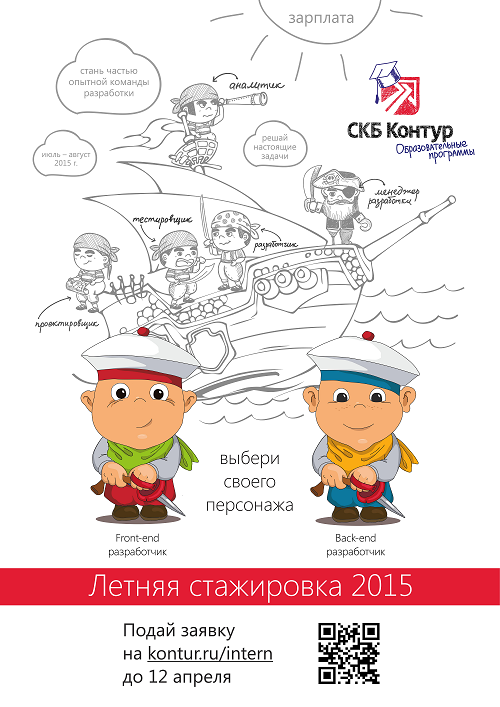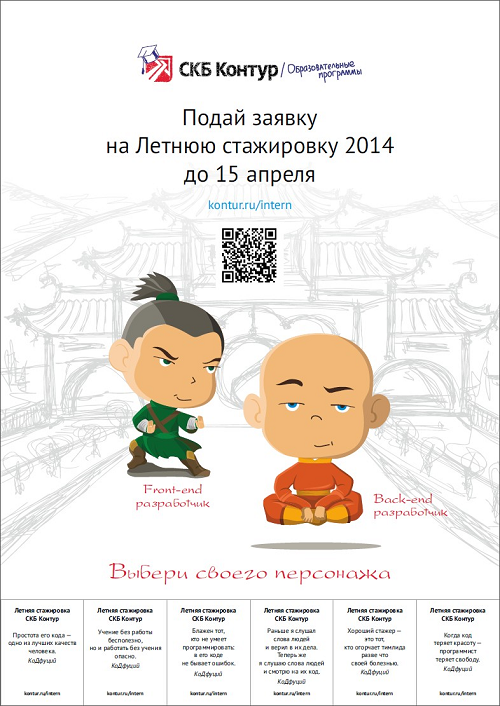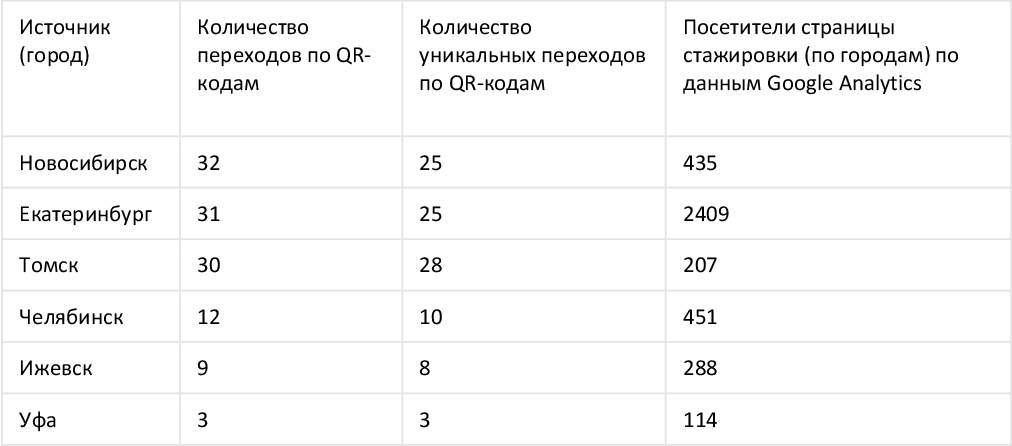Schrödinger's QR code: when will the monochrome design come to life?
A QR code is a very interesting subject: even if it is, it is as if it is not ... It has a difficult history of distribution in our country. On the one hand, several years ago, black and white icons began to actively spread across all sorts of surfaces - from packaging to buildings, they got even very progressive museums to attract young audiences and add an interactive share to the introduction to the beautiful.
We on our project felt how unpopular the “convenient” icon is even among the younger generation. Read more about how we, with our own experience, confirmed the hypothesis that this is more a decoration and a good tone than a useful addition, read under the cut.

All right, museums museums are leisure for the amateur, but even on leaflets and posters, the QR code still lost the battle with a simple link.
')
Our project Educational programs for six years working with students, programmers, conducts training activities and helps to pump skills in industrial development. For each event, we release posters, flyers and be sure to supply them with a QR code.
The central project is an internship to which we invite students from all over the country. On it and decided to put the experiment, the benefit of the scale allows.
To make the final statistics as correct as possible, we printed various QR codes (for different cities) with marked links in them on the internship posters. Next to the code they printed a link to the site.
A separate tagged QR-code link was made for mini-flyers that were distributed at meetings with students, to see if the number of clicks on the QR-code depends on the format of printing.
The results were recorded on the basis of recruitment for an internship. And they exceeded all our expectations. Exceeded with a minus sign.
So, the initial experimental data:
The internship takes place in three cities: in the head office of Ekaterinburg, as well as in Izhevsk and Novosibirsk.
Students of technical specialties, future developers are recruited.
Posters with marked links were hung in the universities of Yekaterinburg, Novosibirsk, Chelyabinsk, Izhevsk, Tomsk and Ufa. Each university in these cities received about 40 posters, at each meeting with students about 100 leaflets were distributed (leaflets were marked with a separate general QR code). Meetings were held in each of the designated cities.

During the recruitment page, the internship visited 15 433 times. Of these unique visitors - 10 995 people.
And now (drum roll!) - data with transitions on marked QR codes:

Data on leaflets that were distributed to students: 50 unique transitions.
Thus, judging by the statistics, even among such a progressive audience as students-programmers, the QR code is not particularly popular. Perhaps because an alternative to the black-and-white square on posters has become a short link that is easy to remember and, if desired, easy to google.
I will not talk about the convenience of using a QR code and the difficulties associated with this, it ’s very eloquently written about why people prefer any other scenario of getting information to the QR code.
Total. We have not abandoned the QR code. It still exists on our posters, leaflets and other promotional materials, but this is just a nice addition, an opportunity to give an alternative and run a little ahead (in the hope that it will be popular). It is possible that the QR code will become a universal and convenient means of obtaining extended information and will replace the small print in most cases. Or maybe it will be added to the list of quickly forgotten “achievements” and will be somewhere between the pager and the floppy disk, since the QR code has not yet been seen by a wide audience of fans / users.
We on our project felt how unpopular the “convenient” icon is even among the younger generation. Read more about how we, with our own experience, confirmed the hypothesis that this is more a decoration and a good tone than a useful addition, read under the cut.

All right, museums museums are leisure for the amateur, but even on leaflets and posters, the QR code still lost the battle with a simple link.
')
Our project Educational programs for six years working with students, programmers, conducts training activities and helps to pump skills in industrial development. For each event, we release posters, flyers and be sure to supply them with a QR code.
The central project is an internship to which we invite students from all over the country. On it and decided to put the experiment, the benefit of the scale allows.
To make the final statistics as correct as possible, we printed various QR codes (for different cities) with marked links in them on the internship posters. Next to the code they printed a link to the site.
A separate tagged QR-code link was made for mini-flyers that were distributed at meetings with students, to see if the number of clicks on the QR-code depends on the format of printing.
The results were recorded on the basis of recruitment for an internship. And they exceeded all our expectations. Exceeded with a minus sign.
So, the initial experimental data:
The internship takes place in three cities: in the head office of Ekaterinburg, as well as in Izhevsk and Novosibirsk.
Students of technical specialties, future developers are recruited.
Posters with marked links were hung in the universities of Yekaterinburg, Novosibirsk, Chelyabinsk, Izhevsk, Tomsk and Ufa. Each university in these cities received about 40 posters, at each meeting with students about 100 leaflets were distributed (leaflets were marked with a separate general QR code). Meetings were held in each of the designated cities.

During the recruitment page, the internship visited 15 433 times. Of these unique visitors - 10 995 people.
And now (drum roll!) - data with transitions on marked QR codes:

Data on leaflets that were distributed to students: 50 unique transitions.
Thus, judging by the statistics, even among such a progressive audience as students-programmers, the QR code is not particularly popular. Perhaps because an alternative to the black-and-white square on posters has become a short link that is easy to remember and, if desired, easy to google.
I will not talk about the convenience of using a QR code and the difficulties associated with this, it ’s very eloquently written about why people prefer any other scenario of getting information to the QR code.
Total. We have not abandoned the QR code. It still exists on our posters, leaflets and other promotional materials, but this is just a nice addition, an opportunity to give an alternative and run a little ahead (in the hope that it will be popular). It is possible that the QR code will become a universal and convenient means of obtaining extended information and will replace the small print in most cases. Or maybe it will be added to the list of quickly forgotten “achievements” and will be somewhere between the pager and the floppy disk, since the QR code has not yet been seen by a wide audience of fans / users.
Source: https://habr.com/ru/post/291380/
All Articles